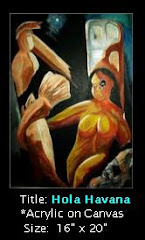In the late 1940s and early 1950s Television was elbowing its way in, but radio was still the primary form of home entertainment. Almost anyone could afford a radio, whereas a TV could run a month’s salary or more.
Some areas of the country didn’t see a regular TV broadcast schedule until the mid-1950s. So for a lot of reasons, Americans turned to radio for their news, information, entertainment . . . and company.
Sometimes, all it took was a simple format, a gracious host (or two), and some pleasant music to make a successful show.
Last month I highlighted one of the last of this genre, the Bing Crosby-Rosemary Clooney show (see Exiting An Era, Side By Side). Today I’ve some episodes of a show that came a full decade earlier, starring a pair of singers that relatively few remember today.
Curt Massey and Martha `Liltin’ Tilton.
The show was originally called Curt Massey Time (sometimes billed `with Martha Tilton’), but changed to Alka_Seltzer Time in the early 1950s to reflect the sponsor.
This was a daytime (weekdays) 15 minute show of music and banter that showcased the talents of Massey and Tilton, and Country Washburne and His Orchestra.
While these quarter hour shows could never be described as spectacular, or even particularly memorable . . . they are undeniably nice.
Curt Massey was a capable radio singer and The Liltin’ Miss Tilton was (and still is) a vastly under appreciated talent. Together they produced a cordial quarter hour that many people were quite happy to invite into their daily lives.
Today, Curt Massy is probably best remember for co-writing and singing the Theme from the TV show Petticoat Junction, which has survived in reruns for 40 years.
Martha Tilton, originally the `Miss’ in the quartet Three Hits and A Miss, was a popular Big Band Singer, gaining national notoriety with the Benny Goodman Orchestra in the late 1930s and later with the Glenn Miller Orchestra.
She sang the memorable jazzy rendition of "Loch Lomond" for Benny Goodman's 1938 Carnegie Hall concert, and had a string of hits as a solo artist in the 1940s.
Her biggest hits included “I’ll walk Alone”, “That’s My Desire”, and "How Are Things in Glocca Morra".
A small sampling of her Benny Goodman years include:
What A Little Moonlight Can Do 3.25 MBThanks For The Memories 2.94 MB
The Lady Is A Tramp 1937 1.44 MB
The Moon Got In My Eyes 1937 2.87 MB
Alka Seltzer Time is one of those old radio shows that doesn’t require much of a commitment from the listener. There are no punch lines to miss, no plots to keep track of, and nothing the least bit complex or controversial.
The music, however, is sweet, nostalgic, and very well done. Tilton and Massey have great chemistry together.
Sometimes that’s all it takes to create a little bit of radio magic.
The following shows can be found on the Internet Archive
First Song - On the Sunny Side of the Street 3.31 MB
First Song - Choo Choo Train 3.32 MB
First Song - Moon Light 3.28 MB
First Song - When Love Goes Wrong 3.31 MB
First Song - I've Got Spurs That Jingle Jangle 3.31 MB
First Song - Moonlight When Shadows Fall 3.31 MB
First Song - Choo Choo Train 3.32 MB
First Song - Medley of Hawaiian Songs 3.31 MB
First Song - It's Istanbul, Not Constantinople 3.30 MB
First Song - Tunes From Old Records 3.32 MB
First Song - I'll Fall In Love With You Every Day 3.31 MB
First Song - Honey, I'm In Love With You 3.33 MB
First Song - It's Istanbul, Not Constantinople 3.31 MB
First Song - Just To Be With You 3.32 MB
First Song - Put On A Bonnet 3.32 MB
First Song - On The Sunny Side Of The Street 3.34 MB
First Song - Papaya Mama 3.28 MB
First Song - Tell Of The Time 3.25 MB
First Song - The Collegiate Ra Ra 3.29 MB




























